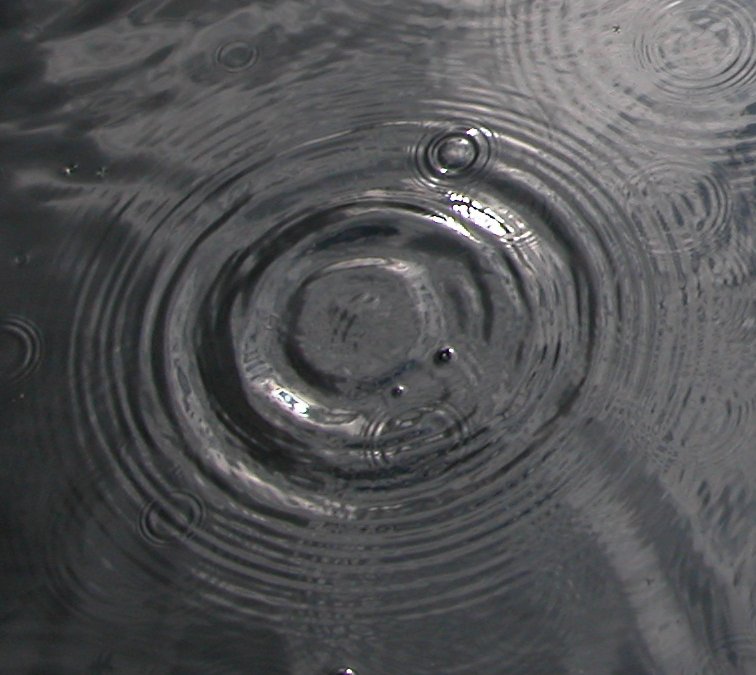 Water is a constant source of amazement to me. Usually I take it for granted just like most of us but from time to time it strikes me how truly wonderful it is. At school we are taught that solids are more dense than liquids which are, in turn, more dense than gases and this all seems to make sense. Not water - oh no - water does its own thing and when it turns in to a solid it floats! This enables the ice caps to float, fish to live beneath the ice in frozen lakes, and ice cubes to bounce around on top of a gin and tonic! How peculiar water is. That's not all! We all know that oil and water don't mix - it's not just that oil will not dissolve in water (or vice versa) but you can't even mix them up. This immiscibility is remarkable in itself but even more so when you realize that it is the basis of all the biochemistry that goes on in every living organism. Biological molecules like proteins and DNA have "oily" parts and "watery" parts. When they are put into water, proteins and DNA arrange themselves so that the "watery" sections are near the surrounding water molecules and the "oily" sections all cluster together to get away from the water. This is the driving force for the protein and DNA molecules to form the correct shapes so that they can do their jobs in the body.
Water is a constant source of amazement to me. Usually I take it for granted just like most of us but from time to time it strikes me how truly wonderful it is. At school we are taught that solids are more dense than liquids which are, in turn, more dense than gases and this all seems to make sense. Not water - oh no - water does its own thing and when it turns in to a solid it floats! This enables the ice caps to float, fish to live beneath the ice in frozen lakes, and ice cubes to bounce around on top of a gin and tonic! How peculiar water is. That's not all! We all know that oil and water don't mix - it's not just that oil will not dissolve in water (or vice versa) but you can't even mix them up. This immiscibility is remarkable in itself but even more so when you realize that it is the basis of all the biochemistry that goes on in every living organism. Biological molecules like proteins and DNA have "oily" parts and "watery" parts. When they are put into water, proteins and DNA arrange themselves so that the "watery" sections are near the surrounding water molecules and the "oily" sections all cluster together to get away from the water. This is the driving force for the protein and DNA molecules to form the correct shapes so that they can do their jobs in the body.
So what is it about water that causes it do all these crazy things? There is a clue in another amazing example in the strange life of water - the snowflake. When water molecules get together they arrange themselves so that a hydrogen atom on one molecule points directly at an oxygen atom of another molecule (to form a so-called hydrogen bond). The best way to arrange molecules to satisfy this need for the atoms to be pointing in certain directions is for the molecules form a hexagon. It is on a hexagon like this that a snowflake forms and builds up until we see the familiar six-fold symmetry of the white fluffy stuff. A hexagon of water molecules has a (molecular-sized) hole running down the middle of it, so when liquid water turns to ice and the molecules rearrange themselves into hexagons and a lot of (incredibly tiny) holes form. This manifests itself as water expanding when it turn to ice and becoming less dense - so ice floats on water. When you try and mix oil and water, the water molecules cluster together to make the most of pointing the hydrogen atoms at the oxygen atoms excluding the oil molecules that interrupt this intimate liaison between water molecules. The result that we see is that oil and water just won't mix.
Next time it snows or you have a drink with ice, think how amazing a substance it is - all because hydrogen atoms like to get it together with oxygen atoms!










Comments
Add a comment